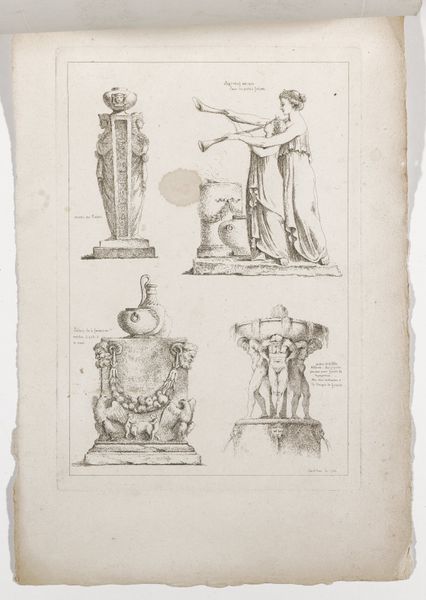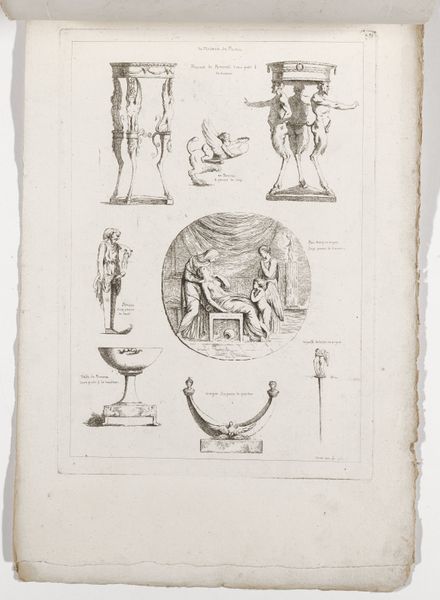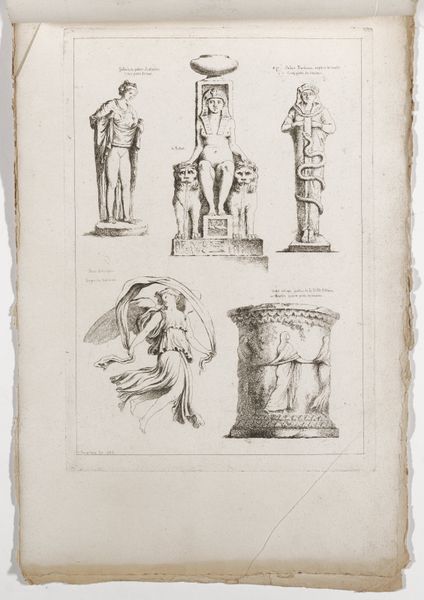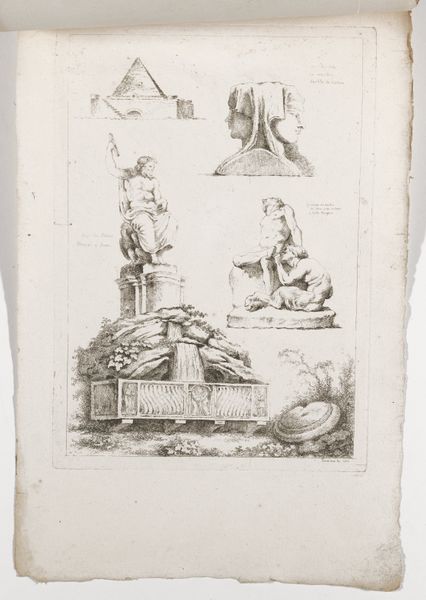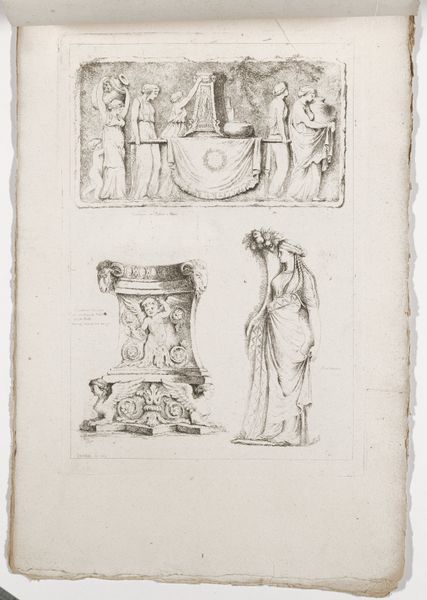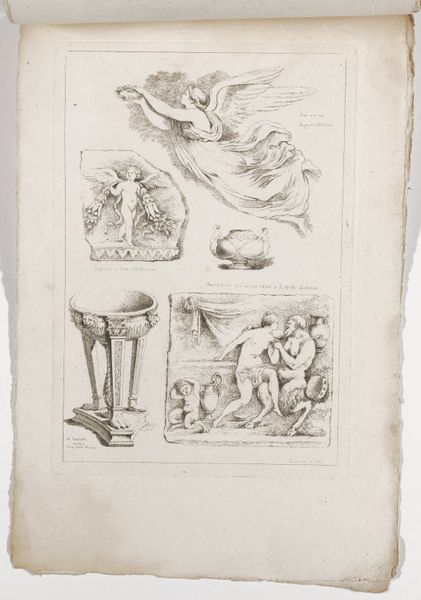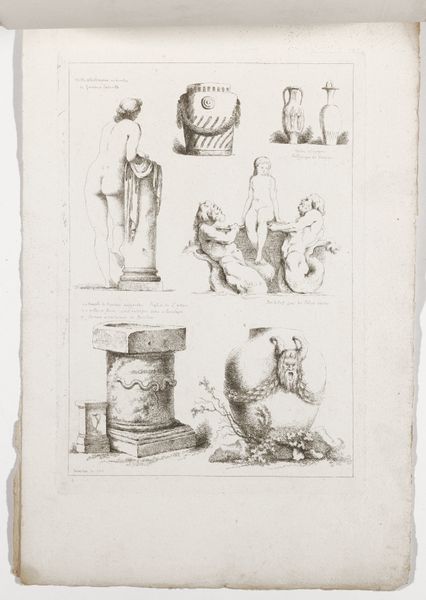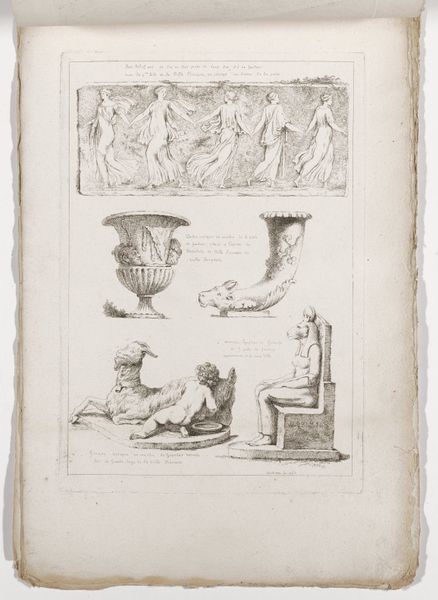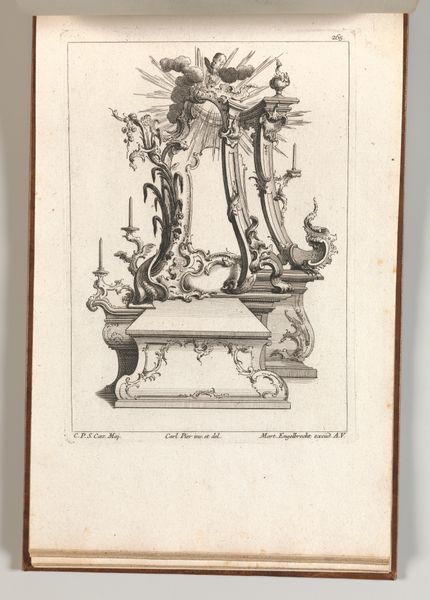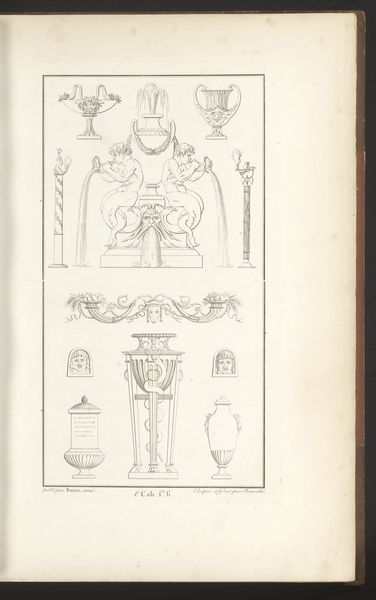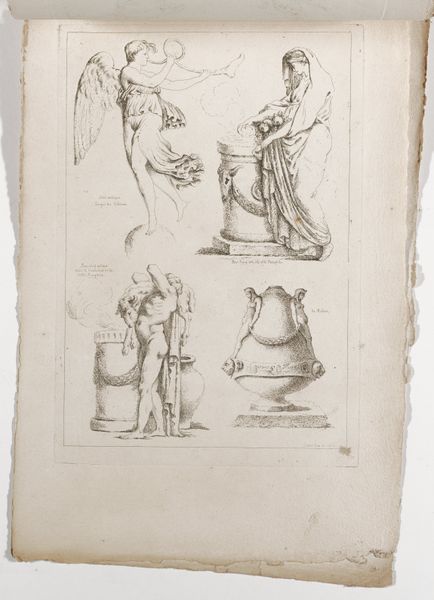
drawing, print, etching
#
drawing
#
neoclacissism
# print
#
etching
#
greek-and-roman-art
#
figuration
#
form
#
history-painting
#
academic-art
Dimensions: 13 1/4 × 9 in. (33.66 × 22.86 cm) (plate)17 1/16 × 11 5/8 in. (43.34 × 29.53 cm) (sheet)
Copyright: Public Domain
Editor: Here we have *Fascicule I*, a 1763 etching by Jean Claude Richard, Abbé de Saint-Non. It presents several drawings on a single sheet. What jumps out at me is this almost clinical arrangement of classical forms. How would you interpret that? Curator: Clinical is interesting! It makes me think of the Enlightenment's passion for cataloging the world. Saint-Non was obsessed with Roman antiquity, wasn't he? These aren't just drawings; they’re documents, attempts to resurrect a lost world, stone by careful line. I wonder if, when Saint-Non sketched these, he ever felt the sun on those ancient stones. Do you get that sense? Editor: Hmmm, I’m not sure, but that suggestion makes me appreciate that they look more “alive” than before. Curator: Exactly. See the statue, standing rigidly, like an artifact pulled from the earth? I like to think of what those original forms once were – gods, emperors, even everyday people captured for all time! Then consider Saint-Non himself – just one fleeting soul chasing shadows. I imagine he was really seeking more than just an image, something about human nature that still inspires the artist and student to copy those artistic features from long ago. Editor: The layers of time within one image! Curator: It becomes more than a pretty etching, doesn't it? More like a meditation. Editor: Definitely. It's amazing to think about how a single sheet can hold so much. Curator: In a way, it becomes like its own little universe of reflections.
Comments
minneapolisinstituteofart about 2 years ago
⋮
The Jean-Baptiste Claude Richard (also known by his title abbé Saint-Non) embodied the important role of the amateur, an patron and connoisseur of the arts as well as a practitioner in 18th-century France. He was a skilled networker, a curious, innovative printmaker, and he supported his artist friends in their projects and travels. Saint-Non executed this suite of prints in Paris in 1763, representing antique fragments and reliefs he saw during his travels in Italy from 1759 to 1761. Most of the monuments are identified in the inscriptions by their locations in Rome. The works reflect French artists’ fascination with antiquity at the time, and the way in which these sources were transmitted to a larger public through the circulation of prints. Remarkably the suite of etchings remain as originally issued, in three groups of six deckle-edged sheets stitched together simply along the top edge.
Join the conversation
Join millions of artists and users on Artera today and experience the ultimate creative platform.
